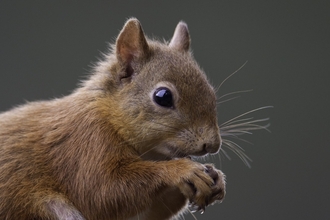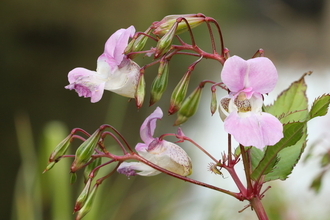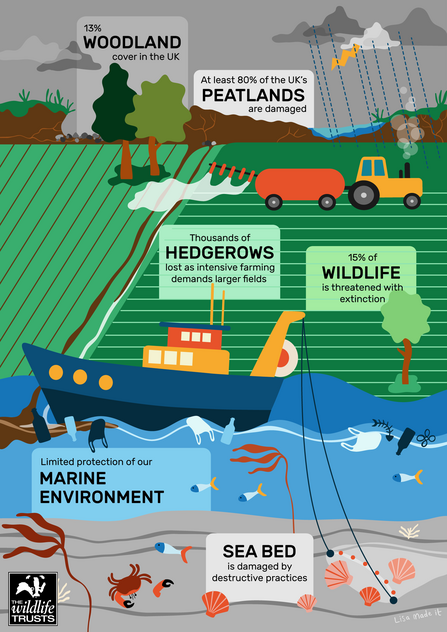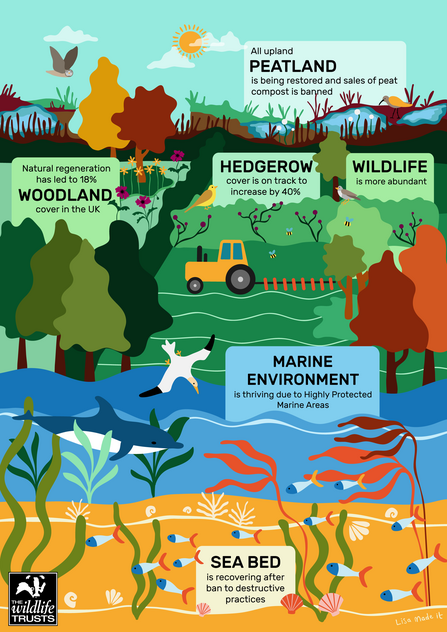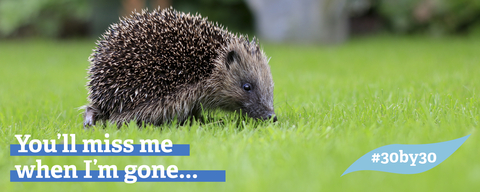
Hedgehog © Tom Marshall
Our natural world is in trouble
This is no secret. Wildlife is disappearing at an alarming rate - some are calling it the next mass extinction - and the threat of climate catastrophe is a constant worry. We live in a time of emergency.
There is still hope - we can tackle both of these critical issues - but we have to act now. Time is running out.
What needs to happen?
The Wildlife Trusts are calling for at least 30% of our land and sea to be connected and protected for nature’s recovery by 2030. Making more space for nature to become abundant once again will give our struggling wildlife the chance to recover and also restore beautiful wild places - places that store carbon and help to tackle the climate crisis.
30% is the bare minimum that nature needs to start recovering but we are far short of this and need your help to turn things around...
Tipping the balance
We must tip the balance from loss to recovery. Today, we have a fragmented mosaic of isolated opportunities for wildlife, but tomorrow we could create the connections and deliver a larger, more resilient, sustainable and coherent network of both healthy habitats and populations of species.
We believe that working with nature, enabling, as far as possible, the natural processes with minimal intervention, is the surest way of helping nature to recover. We want change everywhere: in our countryside and in our villages, towns and cities; we want everywhere to become great places for people and for wildlife. We want to optimise opportunities for wildlife wherever and whenever we can. We do not need everything everywhere, but there must be a place for everything somewhere.
We want farming to be at the forefront of change: driving nature’s recovery, restoring and conserving precious soils, providing opportunities for wildlife and contributing to a much healthier and more prosperous future for us all.
Resilient ecological networks
we need more, bigger, better and joined up spaces for nature. Currently, 12% of land in Wales is designated as Sites of Special Scientific Interest, and 69% of Welsh seas are Marine Protected Areas. Designations are critical in protecting our most vulnerable wildlife but must be actively managed to achieve favourable conservation status.
Our aim is for at least 30% of land in Wales to be protected, connected and positively managed for nature. Our aim for the recovery of our seas is to seek an ecosystem-based approach to build resilience against increased pressures. Only MPA’s that are recovering will form part of the 30% target. Ensuring 30% of land and sea is in recovery is not enough. Our second aim is for a return to the abundance of common and diverse wildlife throughout the entire landscape fabric of Wales.
We can do this together
By joining our mission for nature's recovery, you will make a real difference to wildlife and our natural world. Every pound donated will help us achieve our vision for a wilder future. Together we can restore huge peatlands, which store carbon and become a home for threatened birds like curlews and golden plovers. We will create new wetlands, which reduce the risk of towns and villages flooding and are also great for dragonflies and water voles. We will plant new underwater seagrass meadows to soak up carbon and shelter sea horses and other sea life.
Nature has given us so much, it's now our turn to give back.
Your support goes a long way
The Wildlife Trusts have big plans for nature's recovery. Here's just a sneak peek at some of our plans, which we hope to make a reality with your support...

